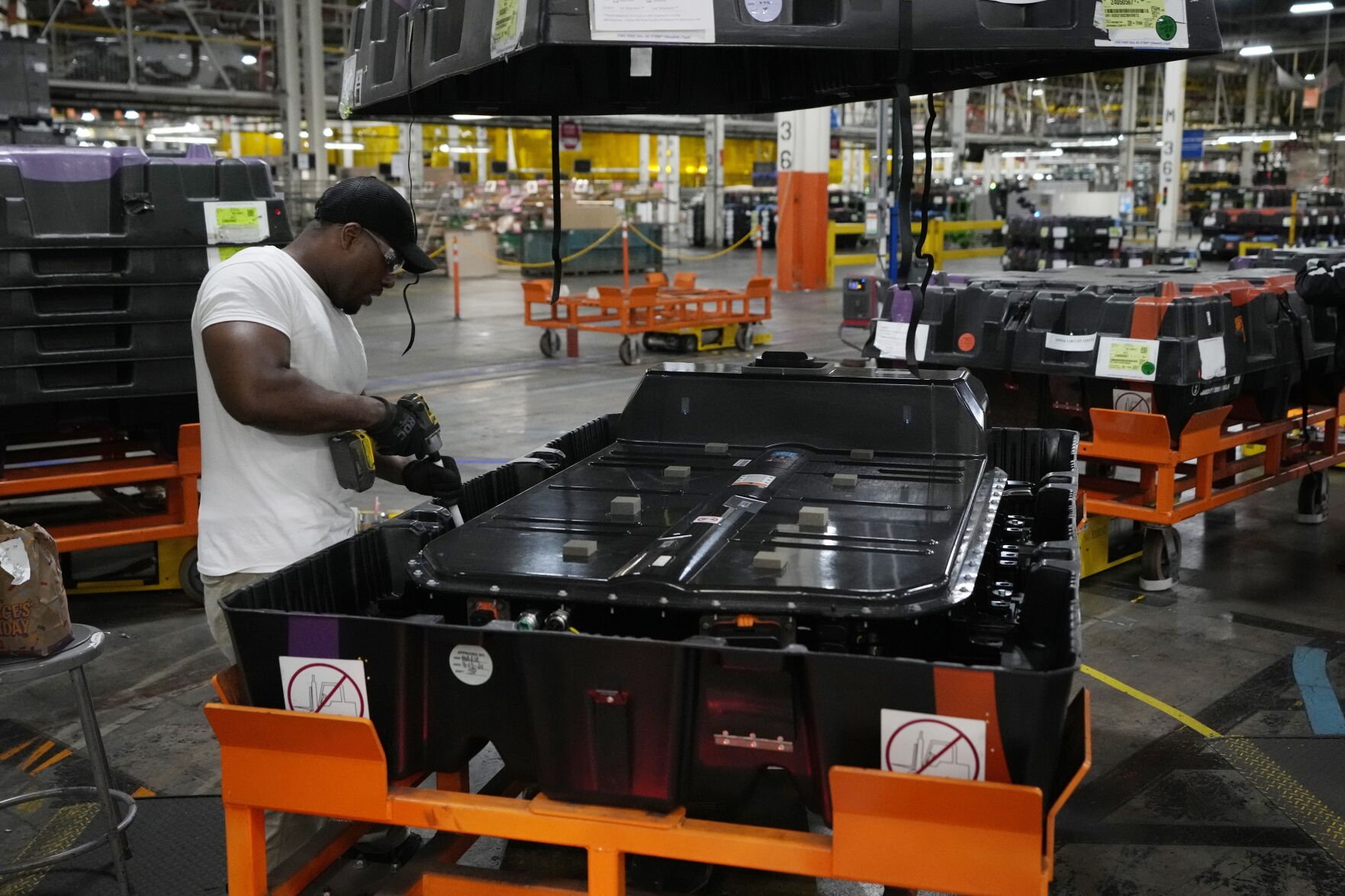US employers pulled back on hiring in October, adding 150,000 jobs in face of higher borrowing rates
WASHINGTON — The nation’s employers scaled back their hiring in October, adding a modest but still decent 150,000 jobs, a sign that the labor market remains resilient despite economic uncertainties and high interest rates that have made borrowing much costlier for companies and consumers.
Last month’s job growth, though down sharply from a robust 297,000 gain in September, was solid enough to suggest that many companies still want to hire and that the economy remains sturdy.
The United Auto Workers’ strikes against Detroit’s automakers likely shrank October’s job gain by at least 30,000, economists say. The strikes ended this week with tentative settlements in which the companies granted significantly better pay and benefits to the union’s workers.

Carlos Osorio
File - An assembly line worker uncrates an LG battery at the General Motors Orion Assembly, Thursday, June 15, 2023, in Lake Orion, Mich. On Friday, the U.S. government issues the October jobs report. (AP Photo/Carlos Osorio, File)
The unemployment rate rose from 3.8% to 3.9% in October.
The U.S. job market has remained on firm footing even as the Federal Reserve has raised its benchmark interest rate 11 times since March 2022 to try to slow the economy, cool hiring and tame inflation, which hit a four-decade high last year. The steady pace of hiring has helped fuel consumer spending, the primary driver of the economy. Employers have added a healthy 225,000 jobs a month over the past three months.
Friday’s jobs report from the government comes as the Fed is assessing incoming economic data to determine whether to leave its key interest rate unchanged, as it did this week, or to raise it again in its drive to curb inflation. In September, consumer prices rose 3.7% from a year earlier, down drastically from a year-over-year peak of 9.1% in June 2022 but still well above the Fed’s 2% target level.
Read more:
___
